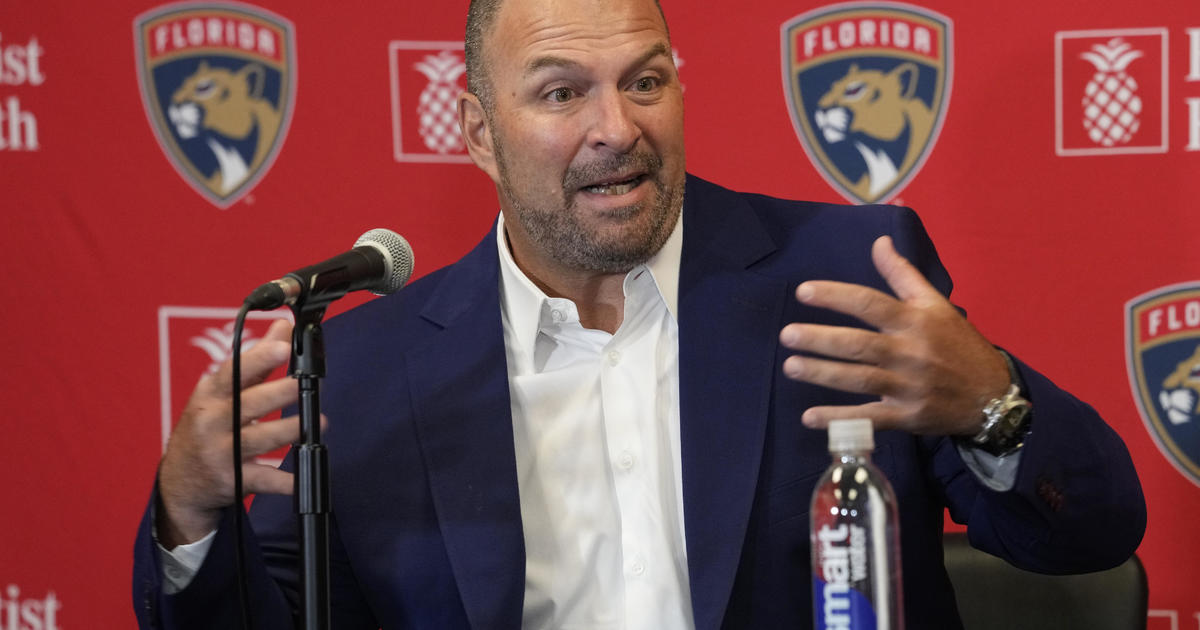Fidel Castro's Remains Make Trek To Final Resting Spot
Follow CBSMIAMI.COM: Facebook | Twitter
HAVANA, CUBA (CBSMiami) -- Fidel Castro's ashes are now on a four-day journey across the country to their final resting place in the eastern city of Santiago.
Crowds waved Cuban flags and chanted "Fidel" as the convoy passed through the Cuban capital of Havana Wednesday.
A small, Cuban-flag covered a cedar coffin containing the remains of the 90-year-old leader was taken out of Cuba's Defense Ministry just after 7 a.m. From there, his remains were placed into a flower-bedecked trailer pulled by a green military vehicle for the more than 500-mile procession.
CBS 4's Eliott Rodriguez is also making the trip.
"We're on our way to Santiago de Cuba. It's a 12-hour drive and we're doing this in this 1985 Russian-made sedan that Fidel Castro used in the 1980's. He used this kind of car and that's what we're using on the 12-hour drive," said Rodriguez in a video.
The night before, Fidel Castro's brother, now Cuban leader Raul Castro paid tribute to the former leader who he said devoted his life to the Cuban people and their dignity.
"Fidel devoted his life to the solidarity, he headed a socialist revolution of the humble, by the humble and for them humble. And he converted into a symbol of anti-colonialist struggle, anti-apartheid, anti-imperialist for the emancipation and dignity of the people. Here is a dignified people ready to defend its independence and the common destiny of the liberated Latin America," Raul Castro said.
Someone who is not singing his praises is his sister Juanita Castro who lives in Coral Gables and has been a fierce critic of her brother since the 1960s.
"I didn't trust him," she said. "I am sorry. That's my brother but I have my feeling, my idea and this not what he promised."
Meantime, the Cuban community is in the middle of a period of mourning which lasts until December 4th - the day Castro's ashes will be buried.
The White House says there is no plan to send a delegation to the funeral, even though there were a couple of diplomats at the memorial Tuesday night.
"I'm not aware that either of them intends to be part of the activities of the next three days. Two of them were in attendance last night representing the United States," said White House Press Secretary Josh Earnest.
Meantime, Castro's remains are making their way to their final resting spot. The route traces, in reverse, the victory tour Castro and his bearded rebels took after overthrowing the forces of dictator Fulgencio Batista in 1959. The six-day Caravan of Freedom that Fidel Castro led in 1959 was among his most triumphant moments — a journey of more than 500 miles along rutted country roads.
Related: Exiles To Demand Democracy In Cuba At Miami Rally
The trip is fraught with symbolism as the island nation prepares to bury the only leader it has known in 57 years besides his younger brother.
The caravan carrying Castro's ashes is passing through a countryside dramatically different from the one he rode through more than five decades ago.
"It's a kind of symbolic closure to his rule," said William LeoGrande, an American University professor of Latin American politics. "The Castro era began with the triumph of the revolution and Fidel's march across the country. Now he's gone and they retrace that route, and the Cubans of this era have a chance to say goodbye."
Castro's victory march snaked from Santiago, where the revolution was launched, through rural towns and cities. For many Cubans, it was their first chance to get a glimpse of the man clad in olive green who seized power from Batista. In cities such as Jiguani and Santa Rita, people lined the streets to greet the rebels passing by in jeeps.
Grainy black-and-white images of Castro waving to the crowds are some of the most enduring images of the revolution.
"Here were these young, bearded mythical revolutionaries, sort of messiah figures, descending from the mountains to liberate the people," said Richard Feinberg, a professor at the University of California, San Diego. "Fidel, a great master of theater, recognized the moment and he wanted to draw it out."
The final caravan transporting Castro's ashes will pass through rural communities significantly changed by social and economic reforms he adopted. Many residents now have access to health care and education. But many of those towns are also in a prolonged economic collapse, the country's once dominant sugar industry decimated, the sugar mills and plantations gone.
Castro and his revolutionary government believed the island's reliance on sugar exports to the United States was the root of many of the country's ills but struggled to diversify the island's economy.
The caravan comes after days of mourning in Havana, where thousands waited in lines for hours to pay tribute before images of Castro as a young guerrilla displayed at the Plaza of the Revolution, the expansive square where he once delivered hours-long speeches. There and across Cuba people signed condolence books and an oath of loyalty to Castro's May 1, 2000, proclamation defining the Cuban revolution as an unending battle for socialism and national autonomy.
In state broadcast programs and Cuba's official newspapers, the government has urged Cubans to unite behind the socialist, single-party system installed by Castro but which has struggled to maintain the widespread fervor it gained more than five decades ago.
COMPLETE COVERAGE: THE DEATH & MEMORIAL OF FIDEL CASTRO
(TM and © Copyright 2016 CBS Radio Inc. and its relevant subsidiaries. CBS RADIO and EYE Logo
TM and Copyright 2016 CBS Broadcasting Inc. Used under license. All Rights Reserved. This
material may not be published, broadcast, rewritten, or redistributed. The Associated Press
contributed to this report.)



